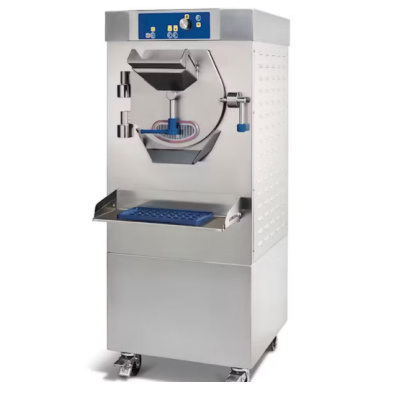
Ice Cream – GELATO
MAKING MACHINES
VERTICAL – HORIZONTAL
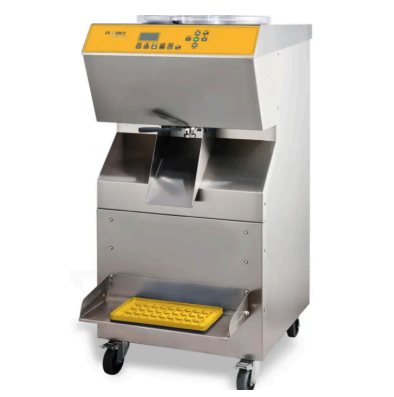
MULTI-FUNCTION
MACHINES
ALL IN ONE
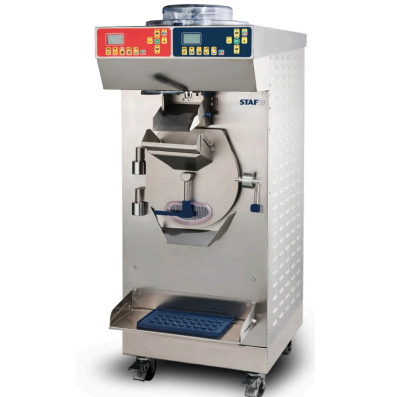
COMBINED
MACHINES
2 IN ONE
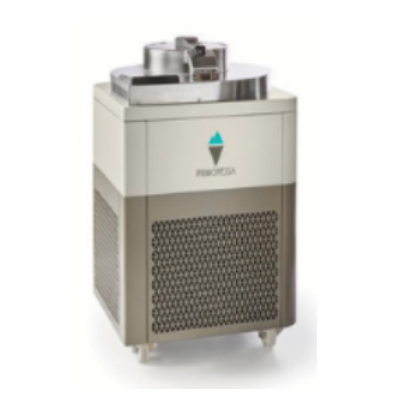
PRINCIPESSA
GELATO MACHINE
FUTURE IS NOW
Starting a small ice cream shop? Thinking of producing tubs of ice cream for wholesale? Planning more outlets? The right machine for each business model
The heart of the production system
The fundamental essential elements, part of any ice cream shop with its own production, Artisan Gelato Parlour or Ice Cream production laboratories, are the “Batch Freezer”, meanings the ice cream making machine, which transforms the liquid mixture into creamy Gelato or Ice Cream ready to eat, the subject of today’s topic, and the “Ice Cream Freezer”, the container in which to preserve the finished Gelato, at the correct serving temperature, ready for serving, whether it is a display case, or a simple conservation counter without display, equipment we will talk about in the following weeks.
The purchase of a batch freezer represents a crucial moment, an investment of a certain size on which depends the entire activity, both production and sales, therefore it deserves a deep evaluation and attention, identifying the potential models of interest, deepening and analysing characteristics and peculiarities, trying to imagine each of them operating in daily production job, to well understand the most suitable for our needs.
Unfortunately, the tendency is not to “choose” the machine based on our own situation and needs. Very often the trend is to buy what already available from the seller, limiting ourselves to consider the production capacity per cycle (3, 5, 7 kg in 10 or 12 minutes), and the hourly capacity (40, 60, 80 kg/hour). People underestimate, or forget, many other aspects of equal importance, often even facing some particular, convenient, discounted “special” price. An hypothetical “economic advantage” that risks to be transformed into limits and extra operating costs, that are much more expensive and, above all, long-lasting over time.
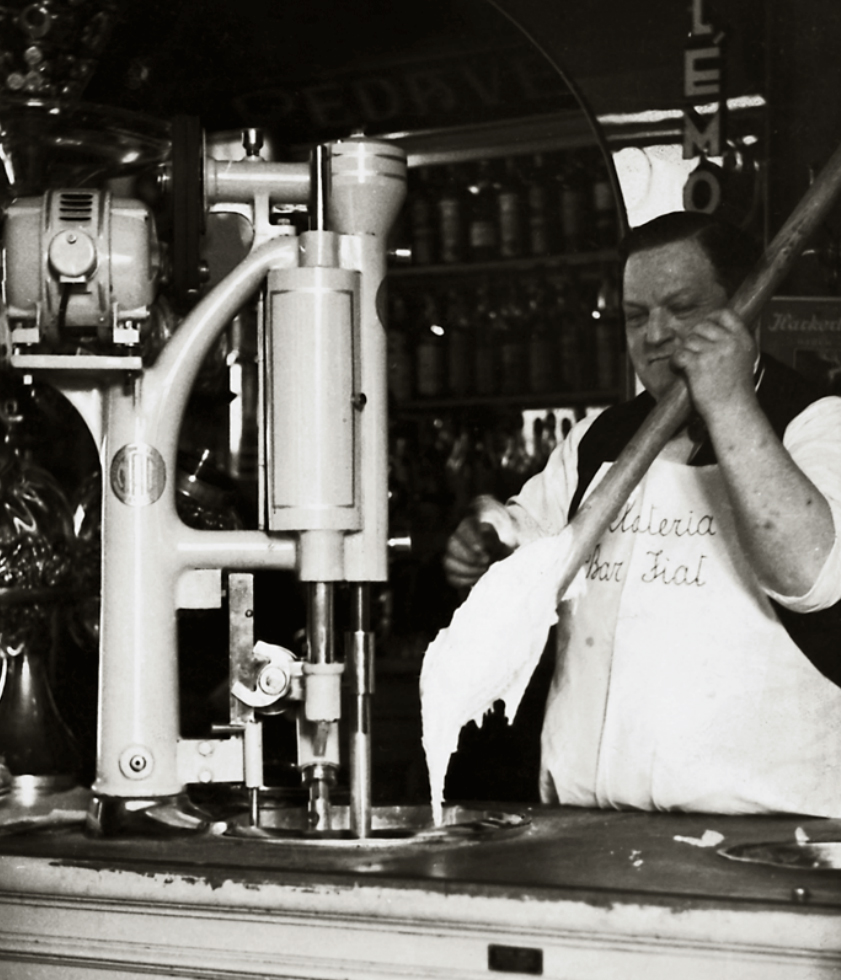
Old Gelato counter “Pozzetto style”, with the Vertical machine inserted inside, sharing the same cold system
There are many cases where the installed equipment does not meet the real needs of the business itself. Logic dictates that the equipment should be selected based on the identified production processes. When the opposite happens, where the processes, both organisational and productive, must adapt to the equipment, difficulties, operational complications, extra costs and problems of various kinds arise, unexpected, unwanted, weighing heavily on the business and its results.
Manufacturers offer countless solutions on the market, each with pros and cons. In this article we try to give an order by analysing the different types of batch freezers, with the aim to help the users in choosing the most suitable for their needs.
Productive capacity
Often used as the main parameter for choosing a batch freezer, the hourly production capacity, expressed in Kg./ hour, represents a symbolic value, rather than a real value, since it never considers the dead times between each cycle, nor the real climatic conditions in which the machine operates. A productivity of 42 Kg/hour for example, with a production per cycle of 7Kg/10′ means that the time needed to extract the finished ice cream has not been considered, nor any washing of the cylinder. Nowadays this is very difficult in any laboratory. On the contrary, the production value per cycle is much more interesting and realistic. Generally expressed with split values (4-7kg/10′-12) it indicates the minimum and maximum quantity of ice cream produced per cycle (4kg in 10′ or 7 kg in 12′), this data more faithfully reflects the reality of what happens in the laboratory. Based on this, for a small, countertop machine, with manual extraction, and a production capacity of 1.5-2 kg/cycle of about 15′, manufacturers declare the hourly production of about 6-8 kg/ hour. However, try to figure out while using it: at the end of the first ice cream cycle, needs to manually extract the ice cream, an operation that takes 5 minutes at least, even for expertises. Then, supposing to produce a strawberry sorbet, is necessary to wash it to avoid milk contamination (the sorbet does not contain milk). 5 more minutes gone. It’s easy understandable that the reality is different, and this applies to any model of batch freezer. Therefore, an estimated 60/80 kg of production per working day, a more than sufficient quantity for almost all ice cream shops in South East Asia, become less realistic, or it requires longer time.
A floor-standing machine, with higher performance and automatic extraction, speeds up the times a lot. It can produce 1, 2, or 3 tubs of ice cream of 3-4 kg each per cycle of 10-12-15 minutes or a little more, 50-60 kg of ice cream per hour of production, 500/600 kg per working day. There are machines available for any desired quantity. Therefore, the correct question along the purchase is the following: what are the minimum and maximum capacities for each cycle? Production flexibility is the most interesting parameter of this aspect, which allows you to produce the desired quantities for each cycle, proportionally to the sale of each flavour.
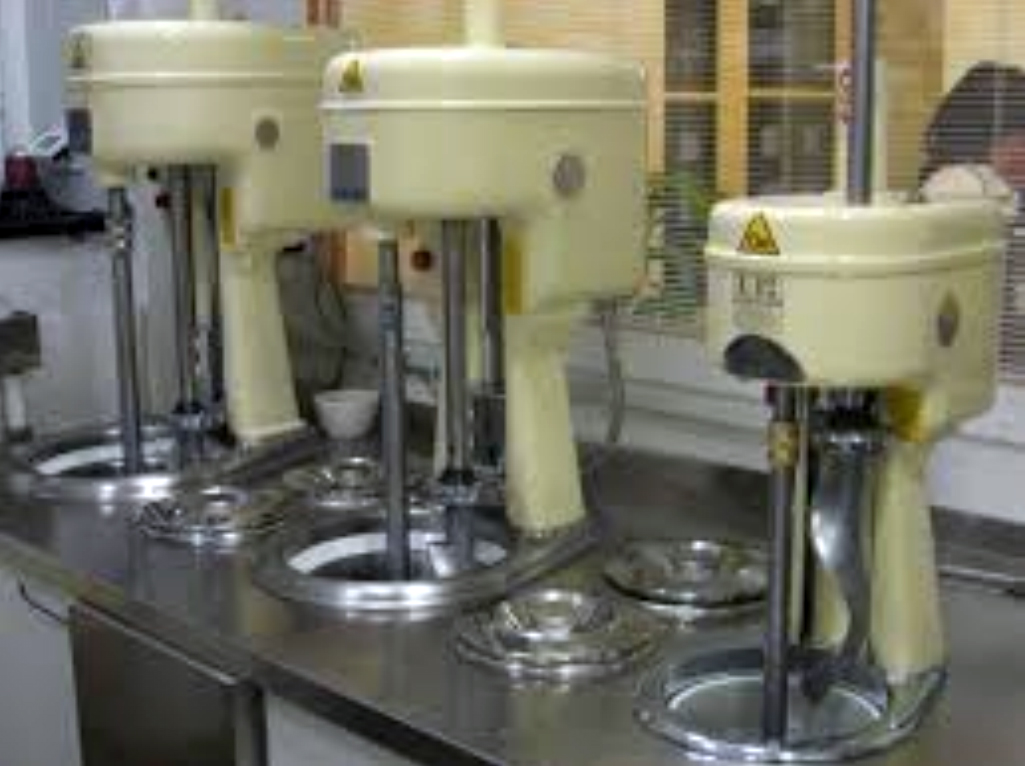
Three old vertical
Ice Cream making machines, in 3 different sizes.
It’s clearly understandable the installation, which is directly inside a common counter, sharing also some space with round Ice cream tubs, named “Carapina, the old, traditional Italian style to make Italian Artisan Gelato.
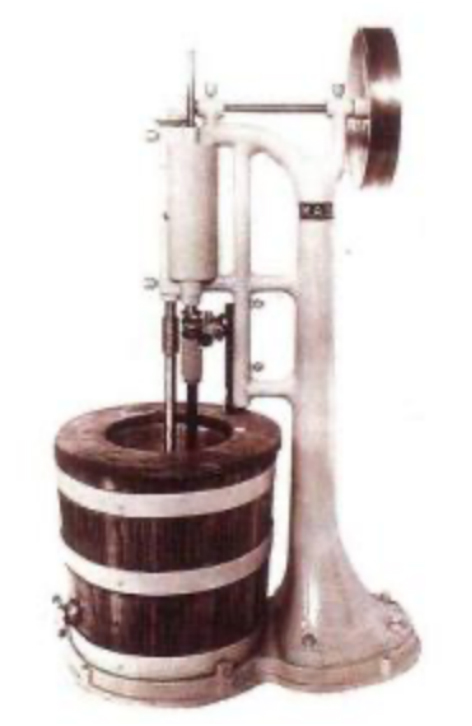
Old Ice Cream Making
Machine
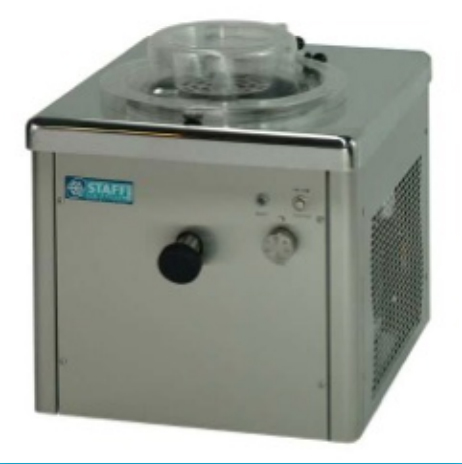
Small Table Top Vertical
Machine – Manual Extraction
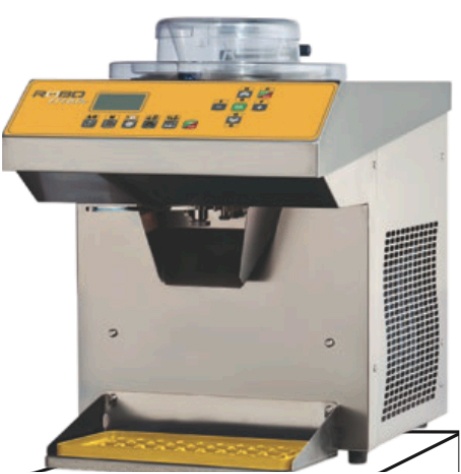
Small Table Top Multi-function Machine Automatic Extraction
The cooling “capability”
Cooling “capability” refers at the way the cold is transmitted to the liquid mixture to freeze it, which affects consistency, structure, durability of finished product. There are three very specific elements: the quantity of cold transferred to the mix, the time it takes to complete the cycle, and the agitation speed to which is subjected. The ideal final result is a creamy, silky, velvety but firm consistency, dry, not liquid or wet, with an ideal temperature at the exit of the machine of about -9/-10°C or even slightly lower. To freeze 3 or 4 kg tub of ice cream with these characteristics, the ideal time is identified between 8 and 12 minutes. Now, you understand well that between 1.5/2 kg of ice cream produced by a small table-top machine in 15/20 minutes, and 3 kg of the same mixture churned with a floor-standing batch freezer in 10 minutes, there will undoubtedly be a certain difference in consistency, structure, durability terms, much better for a long lasting preservation, with fewer alterations over time in favour of the latter.
The electrical power supply
The majority of ice cream machines are powered by 400V/3+N, a three-phases power supply, also called industrial electricity. This is because of the considerable, high power required to produce ice cream adequately. There are few exceptions, such as small counter-top machines, few other models, able to make 3-3.5kg per cycle, powered by 230V/1+N, the usual single-phase power, the common household electricity supply. The installation of the 400V/3ph+N electrical system, and its cost must be considered, as well as electric consumption, which is an important part of ice cream production costs.
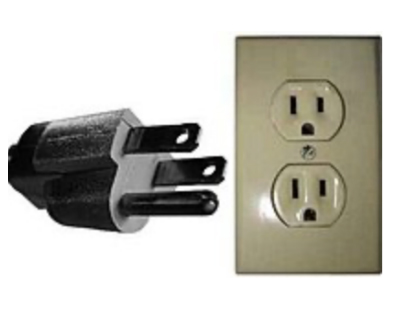
Electric Plug 220/230 Volts,
Single phase, Thailand standard
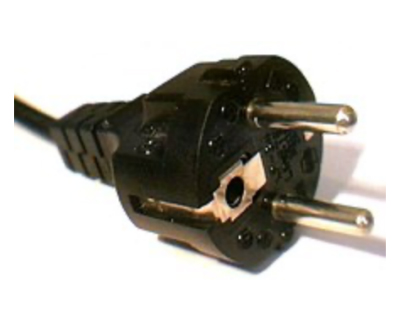
Electric Plug 220/230 Volts,
Single phase, European standard
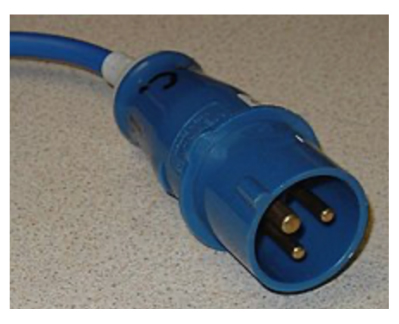
Industrial single phase
Electric Plug 220/230 Volts
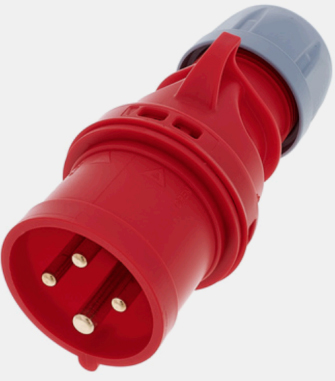
Industrial Electric Plug 380/400 Volts
Left: 4 pins ( 3 phases + Neutral)
Right: 5 pins
( 3 phases + Neutral + Ground)
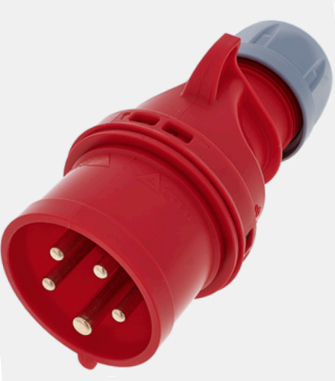
The cooling system (of the machine, not of the ice cream!)
Simplifying, taking the concept to the extreme, batch freezers are electric motors that move an agitator inside a cylinder, which is simultaneously refrigerated with a refrigeration compressor, which is another electric motor. To work well and for long time, these systems need to be cooled, at same ways of cars and motorbikes. How? There are 3 ways:
By using Air, with powerful fans that extract heat from the area where the systems are positioned, introducing new, cooler air. More suitable in temperated and cold areas, where air temperature is fresh or cold, naturally facilitates the operation, in hot countries air cooling usually involves a lengthening in production times, increasing the energy consumption too.
By using Water, with hydraulic cooling circuits that extracts heat by passing through specific “heatexchangers”. More effective, suitable for hot climates, it involves high use of water (about 11/12 lt./ batch), almost always wasted. The addition of an electrically operated “water chiller” with the creation of a closed water circuit, avoids the water waste. In this case, a greater investment should be considered, slightly increasing electricity consumption. The machines work optimally.
By hybrid system, Air + Water together. Much less widespread than the previous two, also due to a higher cost, it is generally applied in particular environmental conditions.
Having clarified this, the cooling system of the machinery should be chosen based on the conditions of each single situation, aware of what each system entails, considering the environmental conditions, consumption and related costs, which however contribute to the production cost of the finished ice cream.
Vertical or Horizontal models ?
Originally, batch freezers had a vertical cylinder, with a scraping blade/stirrer lowered from above to the center, the mixture to be frozen was poured from the upper side, from where it was extracted manually once it had become creamy ice cream, thanks to a special spatula. The 70s brought an epochal change, new machines with a horizontal cylinder and the stirrer contained inside were developed, thanks to whose special shape the automatic extraction of ice cream became possible. The advantage offered by these new models, of great help in the daily work of ice cream makers, allowed a rapid diffusion of horizontal batch freezers. This encouraged some manufacturers to create vertical machines with automatic extraction too. And now, after all these evolutions, an absolute innovation has already arrived on the market, whose characteristics, push us to say that it will be the car of the near future. But we will talk about it in a next paragraph.
Electromechanical or electronic ?
Electro-mechanical machines are simply, made with basic well tested components, do their job well, making ice cream based on “Time settings”, settled bay the operator with a timer, or by “Hardness settings”, meanings that the more evolved models are able to “read” the consistency of Gelato, informing the operator when a certain consistency has been reached out. The advent of electronics has allowed endless extra features, such as specifics different work programs, selectable by the user, suitable for each type of product desired, fatty gelato, sweet gelato, sorbets, in smaller or larger quantities, but also keep records of the work done, processes reports, working time, and so on. Generalising, in case of unstable electric supplies, with power variations or interruptions, electromechanical machines would be preferable, to avoid risks of damages to the electronic boards, certainly more sensitive to failures. Similarly, in the event of a fault, electromechanical models can be more easily repaired by general technicians, unlike electronic models, where the intervention of a specialised technician is often necessary.
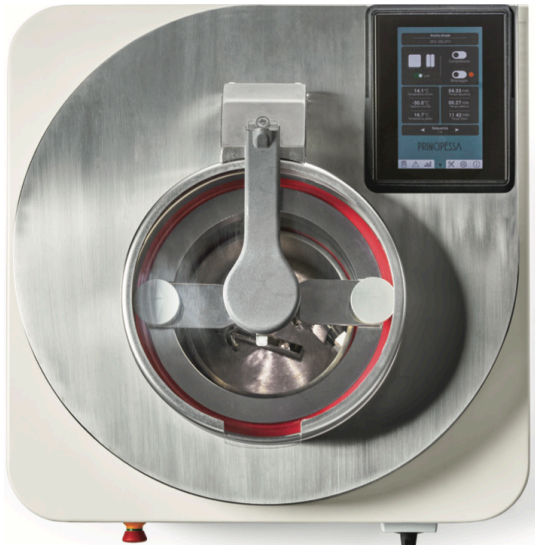
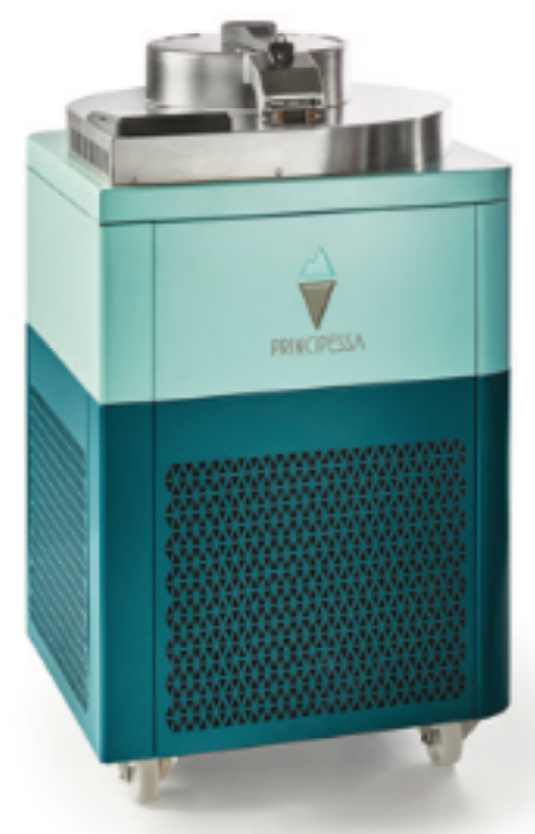
“Principessa” Gelato, Ice Cream Making Machine. The future is here, right now!
And then there is Principessa, a revolutionary batch freezer, a recent project born from the analysis of limits and defects of pre-existing batch freezers, applying absolutely innovative solutions, never seen before, in line with current times. The first and only batch freezer that makes ice cream inside the same container that is then placed in the sales counter. Operating at 230V single phase, air cooled, it produces from 1 to 4 kg of ice cream per cycle in about 8/12 minutes. Principessa does not require water, both for cooling the motors, but also and above all, for washing the machine, an operation eliminated, no longer necessary. It simplifies routine operations, greatly reduces working times, and the consequent costs. All at a price in line, or even cheaper then other batch freezers with the same production capacity. We will soon dedicate an episode exclusively to Principessa, to illustrate all its peculiarities in detail, introducing what we, without fear, define as “the new frontier” of Artisanal Gelato and Ice cream.
Multi-function machines
These machines allow you to perform not only the freezing of ice cream, but also the pasteurisation of mixes, in addition to some other typical pastry processes, such as Custard Cream, Pate a choux, sauces, and so on, all in the same cylinder. Allow to save space inside the laboratory, as well as a lower investment, compared to the purchase of two separated machines. Multi-functional machines represent an excellent compromise, especially in cases where pasteurisation needs are limited to few cases, or modest quantities. All with an excellent quality-price ratio.
Combined Machines
Combined machines are effectively two machines joined together in the same body. Generally, a pasteuriser in the upper side, with batch freezer in the lower side. Very expensive, energy-intensive, they’ve been strongly promoted by manufacturers, in the latest years. The vertical cylinder placed on top performs the heating part of the pasteurisation process. Once the correct temperature is reached (83-86°C), hot mixture is transferred via a pipe to the horizontal cylinder below, the batch freezer area, which provides cooling, completing pasteurisation by quickly bringing the mix at +4°C, and then immediately continuing until the finished ice cream is obtained.
A system not shared by everyone, due to it miss the “Maturation phase” of the mixture, considered by many an important phase of the production process for quality purposes. More over, it requires a very high consumption of energy and water, necessary by this process that inevitably occurs from taste to taste. Topics in which the actual world is very sensitive…
Conclusions
Such a wide, varied availability of models and versions, able to respond to any need, satisfying even the most demanding users. But is the user, who must have the “in-depth knowledge”, even of a general nature, on equipment, how is designed, how it works, which adopted systems and solutions, and at what operating costs. Never forget, since it is a profession, Professional ice-cream makers produce ice cream with passion and love to satisfy consumers-clients, but also and above all, to make profit, the fruit of their daily job. It would be unpleasant to realise, at investment already done, that a large part of profit is wasted to enrich energy and water suppliers.
